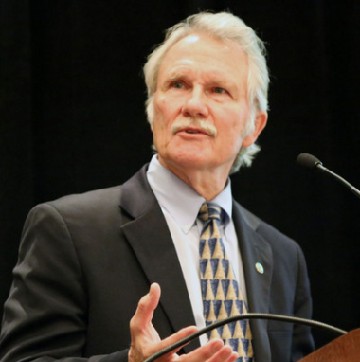Scott Bruun: Education, Priorities, and the Governor’s Budget
Wednesday, December 10, 2014

Governor John Kitzhaber
But let’s give the governor his due. He has long verbalized his commitment to Oregon public education, and his proposed 2015-2017 biennial budget absolutely puts our money where his mouth is. Under the governor’s proposal, total education spending would increase to $9.4 billion, or 51 percent of the total general fund. This would represent growth of about 8.6% since the last biennium – or around 4.3% annual growth.
This solid level of growth should certainly mitigate normal inflationary pressures. It’s also important to remember that this is not the final number. The legislature usually finds the money to propose and pass education funding bills that exceed the governor’s proposals. Power of the purse, and all that.
Nevertheless, the proposed 8.6% increase this biennium falls far short of the 17.5% growth seen last biennium. Some might point to this as a good thing. Good in that slower spending growth may finally indicate that we have dug ourselves out from under the systemic shortfall that plagued education funding throughout the Great Recession. There is some truth to this.
But the governor’s budget this time is extremely aggressive in spending on new or vastly increased kindergarten and pre-k programs. Early Head Start, Early Learning Hubs, Healthy Start-Healthy Families, Oregon Pre-Kindergarten (preschool), and full-day kindergarten are a few of the areas. All have value, especially when it comes to preparing our youngest children for school and ensuring early reading skills. But at what cost?
Sure, taxpayer funded preschool and full-day kindergarten will certainly help parents who would otherwise need to find private childcare alternatives for their 5 year old. But how will expansive new funding here help alleviate over-crowded classrooms in the other twelve grades? How will new funds for full-day kindergarten and new public preschools get back lost school days for Oregon’s 490,000-or-so students who aren’t in kindergarten?
Or ask yourself this: If you are an Oregon parent with a kid in public school, when was the last time you remember your child having a full week of school, five days in a row, for any consecutive period longer than two weeks? Some of us even remember when students only got two days off for Thanksgiving, not five.

Similarly, Oregon’s public professorial staff - the researchers and the teachers in the lecture hall - seem grossly underpaid. Compared to their peers nationwide, average compensation for Oregon’s professors dwells in the bottom quartile. Or said differently, at least 75% of professors nationwide make more than their Oregon counterpart. Doesn’t this make it hard for Oregon to attract and retain the best and the brightest? Ah, but fear not. Over the last few years Oregon has moved from the bottom of the lowest quartile to the middle of the lowest quartile. That’s fantastic. Now when professors go out to celebrate their windfall, they’ll be able to afford a second olive in their bottom-shelf martini.
As we think about public colleges and college students in Oregon, a pretty strong argument in favor of more support can be made. Simply put, the best return on investment from any public expenditure, bar none, is the return Oregon receives from higher education. Consider that college-educated Oregonians will, on average, pay far more in taxes than those without college. The same will also, on average, have far lesser need for the public services those taxes pay for.
Few would disagree that education, bottom-to-top, is the most important agenda item for the State of Oregon. But the right balance is important. I like kindergarten as much as the next guy. But I also want my middle-school 7th grader and my high-school sophomore to have full school years inside uncrowded classrooms. And forgive me, but I also want Oregon’s colleges and universities to be among the best in the nation. And not just at football.

Related Articles
- Scott Bruun: Does Portland Really Want Your Business?
- Scott Bruun: Federal Budget Politics Put Oregon Fishermen At Risk
- Scott Bruun: How Ron Wyden Can Lead The U.S. Senate
- Scott Bruun: Oregon Should Say No to Open Primary
- Scott Bruun: The Beaver State’s Lame Duck
- Scott Bruun: The Importance of Winston Churchill in Portland
- Scott Bruun: The Problem With Congress’s Work Schedule
- Scott Bruun: There’s No More Political Giants in Oregon
- Scott Bruun: To Boldly Go Where No Ad Has Gone Before
- Scott Bruun: Why I’m Thankful For Former Portland Attorney, Kelly Clark
- Scott Bruun: Why the GOP Should Look to Portland’s Urban Conservatives




 Delivered Free Every
Delivered Free Every
Follow us on Pinterest Google + Facebook Twitter See It Read It